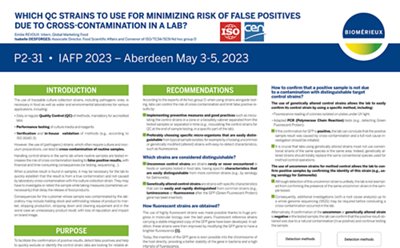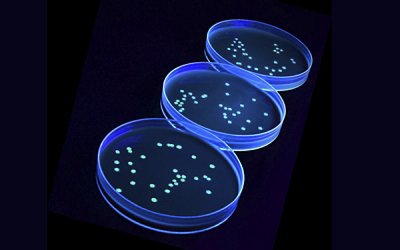Which Quality Control (QC) strains to use for minimizing risk of false positives due to cross-contamination in a lab?
The use of traceable culture collection strains, including pathogenic ones, is necessary in food as well as water and environmental laboratories for various applications, including:
- Daily or regular Quality Control (QC) of methods, mandatory for accredited labs
- Performance testing of culture media and reagents
- Verification and in-house validation of methods (e.g., according to ISO 16140-3)

However, the use of (pathogenic) strains, which often require culture and inoculum preparations, can lead to cross-contamination of routine samples.
Handling control strains in the same lab where routine samples are tested increases the risk of cross-contamination leading to false positive results, with financial and time-consuming consequences (re-testing, sequencing…).
When a positive result is found in samples, it may be necessary for the lab to quickly establish that the result is from a true contamination and not caused by laboratory cross-contamination with the culture collection strain. They may have to investigate or retest the sample while taking measures (sometimes unnecessarily) that delay the release of food products.
Consequences for the customer whose sample was contaminated by the laboratory may include holding stock and withholding release of product to market, stopping production, stripping down and cleaning equipment and in the worst case an unnecessary product recall, with loss of reputation and impact on brand image.
Download the Poster
- Filename
- Poster IAFP P-2 31 ISO Distinguishable control strains.pdf
- Size
- 1 MB
- Format
- application/pdf
- Filename
- Poster IAFP P-2 31 ISO Distinguishable control strains.pdf
- Size
- 1 MB
- Format
- application/pdf
- Filename
- Poster IAFP P-2 31 ISO Distinguishable control strains.pdf
- Size
- 1 MB
- Format
- application/pdf
